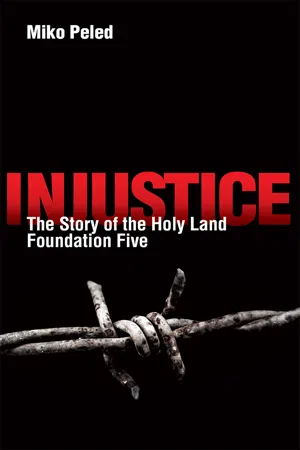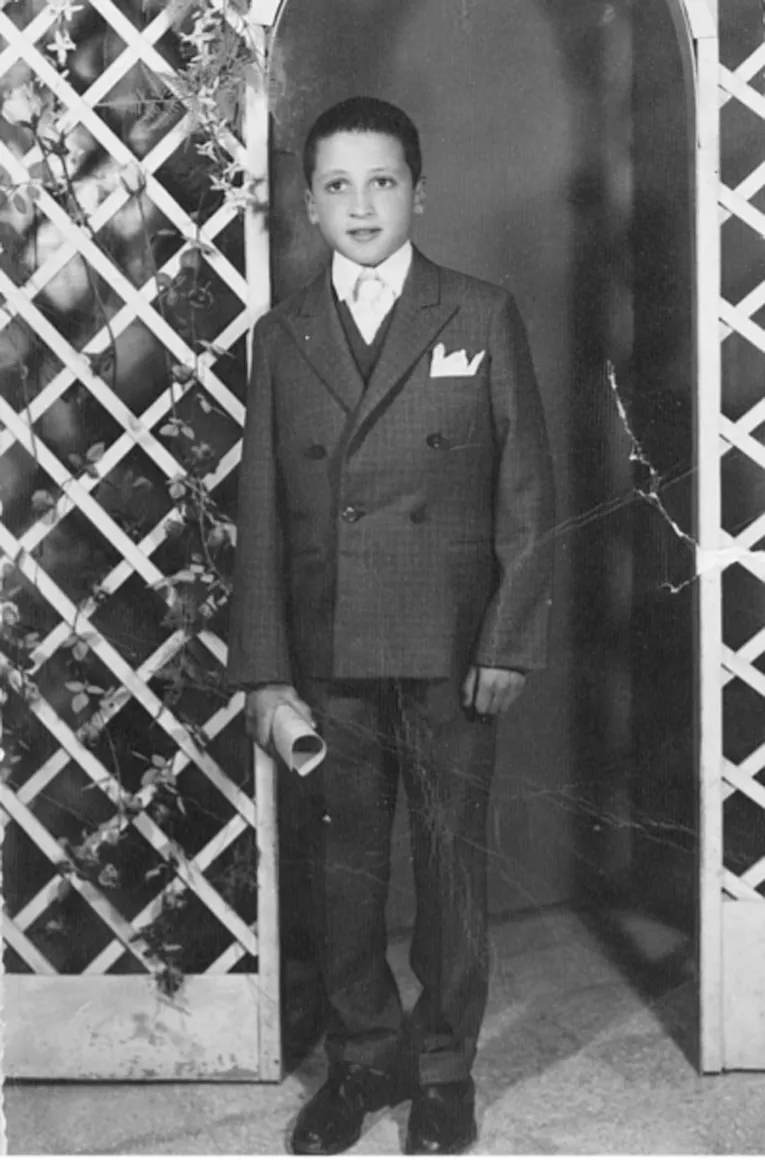![]()
THE HLF-5
Ghassan Elashi
“I have been in prison since April 16, 2007,” Ghassan Elashi wrote to me early in 2016.
First he was placed in solitary confinement, in the Special Housing Unit (SHU) at the detention center in Seagoville, Texas, for six months. Next he was transported via bus to the Federal Transfer Center in Oklahoma City. After only a few days there, he was flown by a special US Marshal-operated airplane to Atlanta, Georgia, where he remained for about ten months at a medium security facility called USP Atlanta. Then, in August 2008, Ghassan was flown back to Oklahoma City Prison and bused to Seagoville again, where he would remain until the second HLF trial ended in April 2010. By the time the trial ended, he had been in prison for three years already.
After the trial, he was taken to the Communication Management Unit (CMU) in Marion, Illinois. After seven years there, Ghassan was transferred to Coleman, Florida, for about a year and then to McCreary, a high-security federal prison for male inmates in Kentucky. I applied to visit at each of these facilities. After years of denials, I was finally approved to visit him at McCreary. At the time, Ghassan was entering the ninth year of a sixty-five year sentence. He was sixty-three years old.
Three days before I left San Diego, I received an email from Ghassan saying the penitentiary had removed me from his “approved visitors” list.
Ghassan’s father was Medhat Abdul Ghani Elashi. He was born in Palestine in the ancient port city of Gaza in 1923. Coincidentally, this was the same year my father was born, also in Palestine, in the northern port city of Haifa. My father joined the armed Jewish Zionist militia while still in high school. Ghassan’s father graduated from Beir-Zeit University and then worked for the Palestine Bank.
Although our fathers never met, their fates were linked. When the Jewish militia became the Israeli Army in 1948, my father became a career officer. The ethnic cleansing conducted in 1948 by Jewish-Zionist forces in Palestine that turned Ghassan’s father and his family into refugees was a result of the new state of Israel to which my father and his generation of Zionist colonizers dedicated their lives.
Fadwa Hashim Elafrangi, Ghassan’s mother, was born in Palestine in the port city of Yaffa in 1932. Her parents had moved to Yaffa from Gaza a few years before she was born. In 1948, she fled Yaffa, along with her entire family and thousands of others, to escape the ethnic cleansing of Palestine. They sailed south back to Gaza with only a few belongings, expecting to return to Yaffa soon. But very quickly Israel drew a political boundary around Gaza and a few other cities surrounding it. The area quickly became known as the “Gaza Strip.” As more and more refugees fled their homes, the newly created “Strip” became one of the largest Palestinian refugee communities in the world. As part of an agreement between Israel and Egypt, the Gaza Strip was governed by Egypt.
In 1952, Medhat and Fadwa were married. Their son Ghassan was born in Palestine on December 19, 1953, in A’daraj, a suburb of Gaza City.
In 1956, when Ghassan was three years old, Medhat was hired by Riyadh Bank in Saudi Arabia. At first, he shared an apartment with other Palestinian expatriates, but in 1958 his family left Gaza for Saudi Arabia as well. By that point Ghassan had been joined by two younger brothers and a sister.
Ghassan’s father was determined to give his children the best education he could. After Ghassan completed first grade in a private school in Saudi Arabia, he and his younger brother Bayan were sent to boarding school in Egypt for a year, then returned to Gaza to their grandfather’s house to stay until 1967, when Ghassan was nearly fourteen.
Back in Gaza, Ghassan attended Salahudin Elementary School and then Al-Yarmouk Middle School. The former is named after the revered Muslim leader who in the twelfth century liberated Jerusalem from the Crusaders, and the latter after the battle of Yarmouk, a major battle that took place in the year 636 C.E. between the armies of the Byzantine Empire and the Muslim Arab forces east of the Sea of Galilee. The result of the battle was a total Muslim victory, which ended Byzantine rule in Syria. The Battle of Yarmouk is regarded as one of the most decisive battles in military history, and it marked the first great wave of Islamic conquests after the death of Muhammad, heralding the rapid advance of Islam into the Levant.
Young Ghassan
Ghassan himself describes these years spent with his grandparents as “joyful.” His grandfather’s house, he says, was “built in the Arabic style, spacious with an open area in the middle and rooms surrounding the open area.”
The house sat at the edge of a ten-acre orange grove and in the summer the orange blossom fragrance, which spreads throughout the coast of Palestine, would fill the house. In the backyard Ghassan’s grandfather cultivated roses in various bright colors and jasmine and gardenia, olive trees and grapevines and of course the ubiquitous lemon tree, which seems an inseparable part of every Palestinian home.
Ghassan spent his summers “picking wild cherry tomatoes, dill, and green chili pepper, which grew wild all over the ground in the orange grove, right under the trees.” Ghassan would bring salt from the house, and using a clay bowl he would mix these ingredients to make a dip for the fresh pita bread that his grandmother baked.
During cold winter nights, Ghassan and his younger brother Bayan would sit with a farm hand named Alarabi, who worked for their grandfather, listening to ancient Arab fables or stories about the history of Palestine. To warm the room, Alarabi put hot cinders from burning orange tree trimmings in a metal container. Even the mattresses the boys sat on were stuffed with dried leaves from the same trees.
Ghassan vividly remembers standing with Alarabi on the roof of his grandfather’s house one dark night, enjoying the soft sea breeze and the fragrance of orange blossom. Alarabi was smoking a cigarette.
Looking toward the sea Ghassan could see the endless sand dunes that are typical of the southern coast of Palestine. At one point barbed wire cut through the dunes.
“Don’t ever try to cross this barbed wire, or the Yahud will shoot you.” Ghassan had been warned. And indeed Israeli soldiers were under orders to shoot Palestinian “infiltrators” on sight. Ghassan was not even allowed to see what life was like for his countrymen inside occupied Palestine.
The lights of Jewish cities and towns shone beyond the boundaries of the Gaza Strip. “Why are the Arab nations unable to liberate Palestine?” Ghassan wondered aloud.
Alarabi inhaled smoke, then blew it slowly out through his nose and mouth. He put his hand on Ghassan’s head.
“As long as America is helping Israel we will never win.”
Ghassan later wrote to me, “I didn’t know anything about America [then] except that it was far away.”
As a result of the Suez Campaign, a joint Israeli-British-French attack on Egypt that took place in October of 1956, Israel had come to occupy the entire Sinai Peninsula, including the west bank of the Suez Canal and the Gaza Strip. At that time, my own father was already a colonel in the Israeli army. After the Suez Campaign, he was appointed military governor of Gaza. The occupation lasted about six months before, under American pressure, Israel returned the occupied territories to Egypt, including the Gaza Strip.
On the 7th and 14th of March each year, refugees in the Gaza Strip commemorated the Israeli forces’ 1957 withdrawal. Schools were closed, and thousands of people marched through Omar Almukhtar Street, the main street in Gaza. Palestinian flags were raised and people chanted slogans calling for the liberation of Palestine from the Zionist occupiers.
The march terminated at Aljundi Almajhool Square. At the center of this square stands a white statue of a soldier pointing his hand and finger northeast toward occupied Palestine. On it there is an inscription: We Shall Return.
The statue of the Anonymous Soldier, Gaza City
“I recall marching with the crowd and growing aware of the Nakba,” Ghassan wrote to me. By the mid-1960s, when he was old enough to truly understand, the occupation of Palestine and the existence of the state of Israel had been a reality for close to twenty years.
In 1965, the education board in Gaza, which as mentioned earlier was under Egyptian control, introduced a new curriculum that included the history and geography of Palestine. The history covered a period that began prior to the introduction of Islam and all the way to current times. For the first time, Ghassan was taught about the Balfour Declaration, the British commitment to establish “a national home for the Jewish people” in what was then Palestine, and the history of encouraging Jewish people to immigrate and colonize the area.
In June of 1967, Ghassan and his brothers, Bayan and Basman, left for Saudi Arabia, intending to spend summer vacation with their parents. Since there is no airport in Gaza the three boys took a cab to Cairo. It was a grueling ride that took more than ten hours in temperatures that exceeded one hundred degrees Fahrenheit, with no air conditioning.
When they reached the Suez Canal, the passengers had to get out of the car and wait for a raft that would take them across the canal. People, cars, and buses, along with camels and other livestock, all disembarked before the three brothers could board the raft that slowly drifted back toward mainland Egypt. Once they had crossed, they got back in the taxi and continued to Cairo. The main roads were crowded with military vehicles taking troops and equipment, making their way toward the Suez Canal and the Sinai Peninsula. The boys’ faces were glued to the taxi’s windows as they witnessed this massive military buildup.
Only days after they arrived in Jeddah, Saudi Arabia, Israel once again attacked Egypt (as well as Jordan and Syria) and started a war that changed the face of the Middle East forever. Six days later, Palestinians in Gaza were once again under Israeli rule, this time permanently.
“The news coming from the Egyptian radio was distorted,” Ghassan remembers vividly, “making claims that the Egyptian air force was shooting down hundreds of Israeli jets.
“I recall my father sitting by the radio the entire time, hoping like millions of Palestinians around the world that this time the Arab forces would liberate Palestine. I remember him listening to speeches by the charismatic leader of Egypt, Gamal Abdul Nasser.” Nasser warned that should Israel enter into war with Egypt and the other Arab countries bordering it they would regret it, that the Arab forces were ready to deliver a swift blow to the Israeli Defense Forces and liberate Palestine once and for all.
But after just six days it was confirmed that the Israeli forces had instead delivered a devastating defeat to the Egyptian army, killing thousands of Egyptian soldiers, and that the Israelis had reached the Suez Canal, occupying the entire Sinai Peninsula and the Gaza Strip once again. Jerusalem and the entire West Bank were occupied, ...



